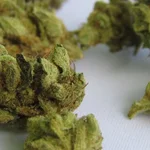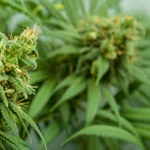The Science of Cannabis
Cannabis, commonly known as marijuana, has been used for medicinal and recreational purposes for centuries. The plant contains over 100 compounds, called cannabinoids, that interact with the body’s endocannabinoid system to produce various effects. The most well-known cannabinoid is tetrahydrocannabinol (THC), which is responsible for the plant’s psychoactive properties. Another important cannabinoid is cannabidiol (CBD), which has gained popularity for its potential therapeutic benefits.
The Endocannabinoid System
The endocannabinoid system (ECS) is a complex network of receptors, enzymes, and endocannabinoids that regulates various physiological processes in the body. The ECS is involved in pain signaling, mood regulation, appetite, immune function, and more. THC and CBD interact with the ECS in different ways, producing different effects on the body.
The Entourage Effect
The entourage effect refers to the synergistic interaction between different cannabinoids, terpenes, and other plant compounds. When consumed together, these compounds can enhance the therapeutic effects of cannabis. For example, the terpene myrcene has been shown to enhance the sedative effects of THC.
Cultivating Cannabis
Growing cannabis is both an art and a science. The plant has specific requirements for light, water, nutrients, and temperature. Cultivators must also choose the right strain for their desired outcome, whether it be high THC content for recreational use or high CBD content for medicinal use.
Choosing a Strain
Cannabis strains can be categorized into three main types: indica, sativa, and hybrid. Indica strains are known for their relaxing and sedative effects, while sativa strains are more energizing and uplifting. Hybrid strains are a combination of both indica and sativa, and offer a balance of both effects.
Growing Conditions
Cannabis plants require specific growing conditions to thrive. They need plenty of light, ideally 12-18 hours of light per day, as well as a consistent temperature between 68-78 degrees Fahrenheit. Proper ventilation and air circulation is also crucial to prevent mold and mildew growth.
Harvesting and Curing
Harvesting and curing are critical steps in the cultivation process. Cannabis plants must be harvested at the right time to ensure the highest potency and quality. After harvesting, the buds must be dried and cured to remove excess moisture and enhance flavor and aroma.
Edibles and Extracts
Cannabis can be consumed in a variety of ways, including smoking, vaporizing, and ingesting. Edibles and extracts are two popular methods of consumption.
Edibles
Edibles are food products that are infused with cannabis. They come in a variety of forms, from gummies and chocolates to baked goods and beverages. Edibles take longer to take effect than smoking or vaporizing, typically 30 minutes to 2 hours, but the effects can last much longer, up to 8 hours. Proper dosing is crucial when consuming edibles, as they can be very potent.
Extracts
Extracts are concentrated forms of cannabis that are made by extracting cannabinoids and other plant compounds from the plant material. They come in many forms, including oils, tinctures, and waxes. Extracts are typically much stronger than traditional cannabis products, with higher levels of THC or CBD.
The Future of Cannabis
The legalization of cannabis for medicinal and recreational use is a rapidly evolving issue. As more states legalize cannabis, the industry is expected to continue to grow and evolve. Research into the therapeutic benefits of cannabis is also expanding, paving the way for new treatments and therapies.
Medical Uses
Cannabis has been shown to have potential therapeutic benefits for a variety of conditions, including chronic pain, epilepsy, and anxiety. CBD, in particular, has gained attention for its potential to treat seizures and other neurological disorders. As research into cannabis and its effects on the body continues, new medical applications are likely to emerge.
Recreational Use
The legalization of cannabis for recreational use has sparked a new industry, with new products and innovations emerging every day. From cannabis-infused beverages to THC-infused skincare products, the possibilities are endless. As more states legalize cannabis, the industry is expected to continue to grow and evolve.
Conclusion
Cannabis is a complex plant with a rich history and many potential uses. From the science behind the plant to the art of cultivation, there are many factors to consider when exploring the world of cannabis. Whether you’re interested in its medicinal benefits or its recreational potential, there’s no denying that cannabis is a fascinating and ever-evolving topic.












